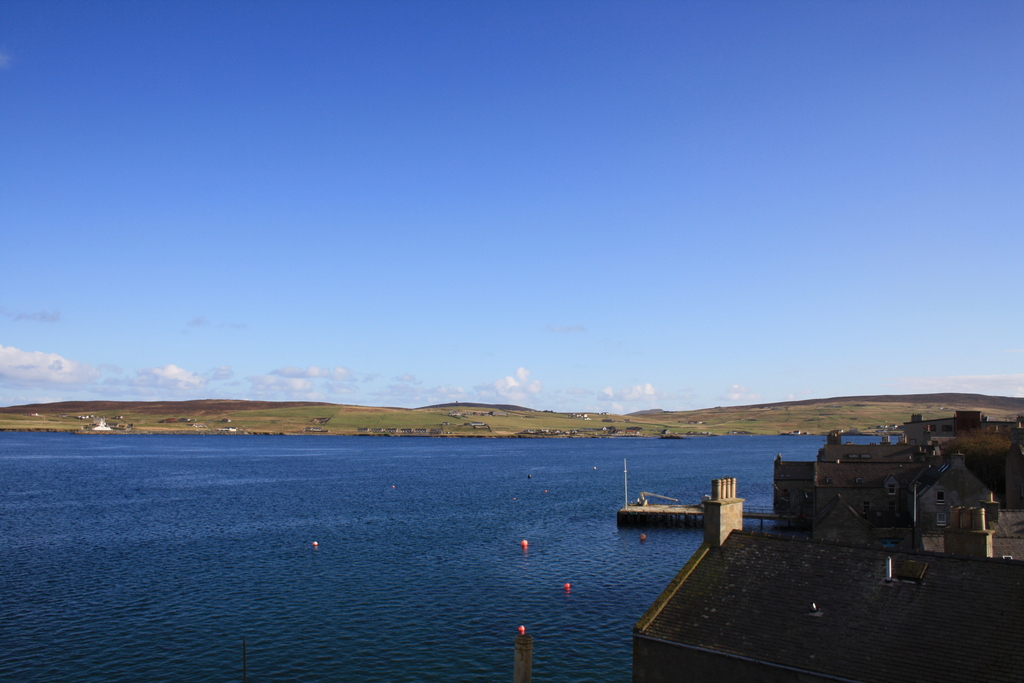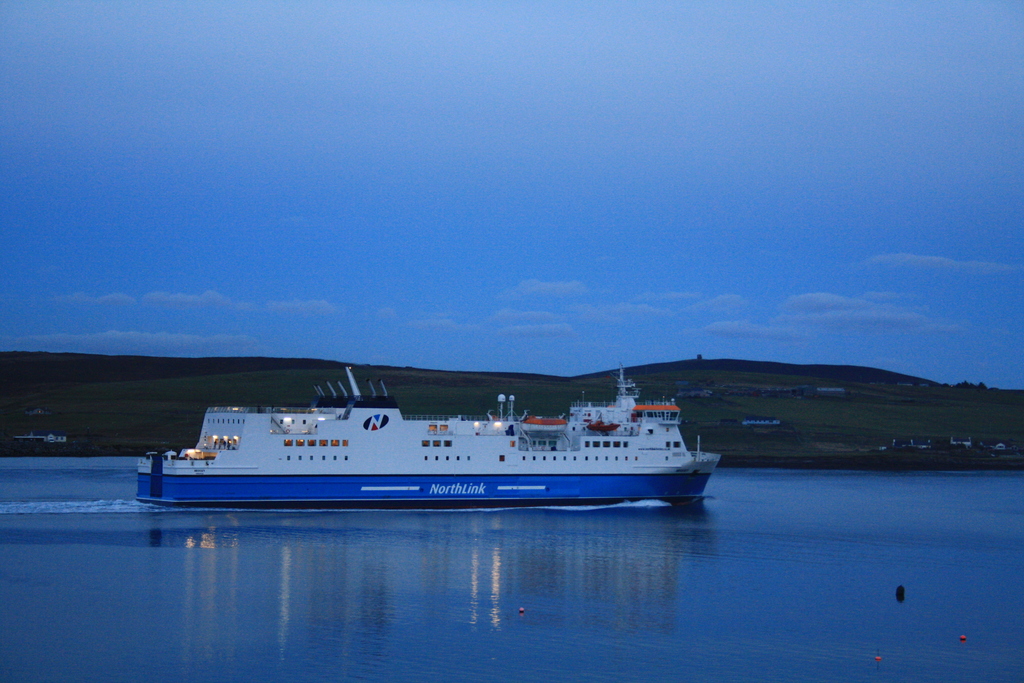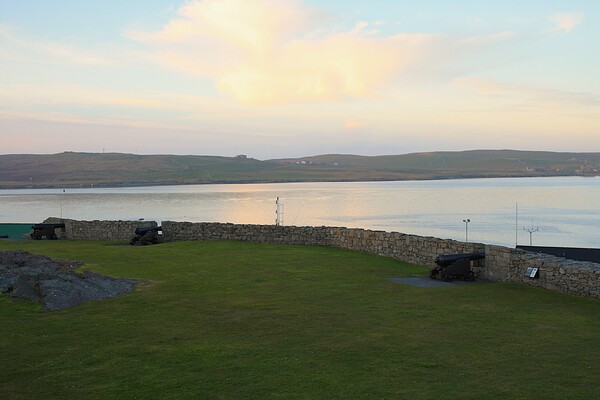Shetland is quite unique from the rest of the British Isles with its own culture and heritage. Most people enjoy to tour, walk, cycle and find quiet places to relax and enjoy the atmosphere of these islands.
Visitors to Shetland in January have the opportunity to see Up Helly Aa, held on the last Tuesday. This unique event sees a procession through Lerwick with flaming torches, culminating in the burning of a Viking longship.
There is a specific tourist information resource for the islands here.

View of Bressay from Lerwick

MV Hrossey with Bressay in the background
By ferry
NorthLink Ferries overnight sailing from Kirkwall (Orkney) to Lerwick (Shetland).
NorthLink Ferries overnight sailing from Aberdeen to Lerwick, with or without calling at Orkney along the way.
SAVING! For the Aberdeen - Lerwick and Aberdeen - Kirkwall - Lerwick routes (but not the Kirkwall - Lerwick route): Spirit of Scotland Travel Pass and Highland Rover Travel Pass (for rail travel) will entitle you to a 20% discount on NorthLink Seated Standard tickets purchased on the day of travel.
Arrival on Shetland is at the Lerwick Ferry Terminal. There is a bus stand outside from which buses to the centre of Lerwick and the main bus station depart.
By plane
Sumburgh Airport: from Kirkwall (Orkney), Inverness, Aberdeen, Edinburgh, Glasgow, Dundee and Bergen (Saturdays during summer). There is a bus stand outside from which buses to Lerwick depart.
Getting around:
Buses on Shetland are coordinated by ZetTrans (a department of Shetland Islands Council).
The Islands are larger and more spread out than Orkney and you might wish to hire a car.
However, if you are fit and able, then getting about on foot and bus is possible and rewarding.
Ferries are available to the islands of Bressay, Fair Isle, Papa Stour, Foula, Whalsay, Skerries, Unst, Yell and Fetlar.
If you would like to visit the outer isles of Shetland, including Fair Isle and Foula, Shetland Island Council provides inter-island air services from Tingwall Airport.
This five-sided artillery fort with bastions projecting from each corner dominates the centre of Lerwick. It was built in 1665 to protect the Sound of Bressay from the Dutch, but taken by them and burned in 1673 and then rebuilt in 1781.
The current fort dates from that time. At the time Britain was at war with France and Spain which was linked to the American War of Independence.
The fort housed 270 men and has 12 guns overlooking the sea facing side. It was named after the wife of George III.

Fort Charlotte
From geological beginnings to the present day, the Museum tells the story of Shetland. Being famous for textiles, there are specific displays on this particular aspect of the Island’s past.
The museum is located in Lerwick at Hay’s Dock.
JARLSHOF PREHISTORIC AND NORSE SETTLEMENT
This archaeological site is located at Sumburgh on the Sheltland Mainland. It is accessible by bus from Lerwick bus station, journey time around an hour.
First inhabited by Neolithic people around 2700 BC, it remained in use until AD 1600s. Among the findings were oval-shaped Bronze Age houses, an Iron Age broch and wheelhouses, and Norse long houses.
Sumburgh Head (grid reference HU407079)
Two miles’ walk from Sumburgh is the RSPB Reserve Sumburgh Head. This 100 metre high cliff attracts thousands of seabirds including puffins, fulmars, guillemots and shags, as well as whales, orcas and dolphins.
The lighthouse is now a Visitor Centre with cafe and toilets. The RSPB Reserve is open year round and is free to visit, while the visitor centre is open April – September and has an admission charge.
Page last updated 9 September 2025